MIRACLE data analysis tools
6) Combined
analysis of multi-satellite FAC data and ionospheric electric field
data
using the method of characteristics ("FAC-based" method of
characteristics):
- Short description of the
analysis
method:
The "FAC-based" method of
characteristics
combines spatial data of the ionospheric electric field (as obtained by
coherent scatter radars like STARE or SuperDARN) with field-aligned
current
(FAC) estimates from a fleet of satellites (like CLUSTER II), mapped
down
to the ionosphere, to calculate 2D distributions of the true (not
equivalent)
ionospheric currents and the ionospheric conductances. The primary
output
of the method is the Hall conductance, from which together with the
inputs,
the actual (not equivalent) ionospheric currents and the Pedersen
conductance
can be calculated. The "FAC-based" method of charactistics needs an
estimate
of the Hall to Pedersen conductance ratio, which can be assessed from
the
level of ground magnetic disturbance, supported by all-sky camera or
satellite
data if available.
For more details: see
Literature
(below)
- Input data requirements:
Spatial input data of the
ionospheric
electric field, and of the field-aligned currents (FACs) as measured by
the satellites, mapped down to the ionosphere.
To obtain 2D FAC distributions
from the satellites, it is of advantage if the ionospheric situation to
be studied can be assumed stationary for the time that either:
- the ionospheric feature
moves
over
the satellites' footpoints, or
- the satellites'
footpoints
move over
the analysis region selected, or
- a combination of the
above.
Then, FAC data of different
timesteps
can be reduced to a reference timestep, with respect to the velocity of
the ionospheric feature and/or of the satellites' footpoints, to obtain
a more complete 2D FAC distribution.
- Output quantities:
Spatial distributions of Hall-
and
Pedersen conductances, and the true (not equivalent) ionospheric
currents.
- Literature:
- Amm, O., The method of characteristics for
calculating
ionospheric electrodynamics from multi-satellite and ground-based radar
data, J. Geophys. Res., 107 (A10), 1270,
doi:10.1029/2001JA005077, 2002.
- Example plots for a modeled
case
of a dark plasma vortex:
To illustrate the method, we use
a
model of a dark plasma vortex that moves eastward over the MIRACLE
field
of view with a velocity of 4 km/s. We assume that the vortex is
stationary
for the 2 minutes that it needs to pass over the central MIRACLE field
of view. The model of the plasma vortex comprises the main results of a
real event study of such an ionospheric feature that was recently
conducted
by Kosch et al. (JGR 105, 24889, 2000).
This is the input
data: FAC distribution that CLUSTER II
would
observe during the 2 minutes when the vortex passes eastward over the
MIRACLE
array. The FAC data of the different timesteps is reduced to a central
reference timestep with respect to the vortex's velocity (upper panel).
The footpoints and conjugate magnetic field lines of the CLUSTER II
satellites
at the reference timestep are shown in the lower panel, for a typical
pass
over the central MIRACLE field of view.
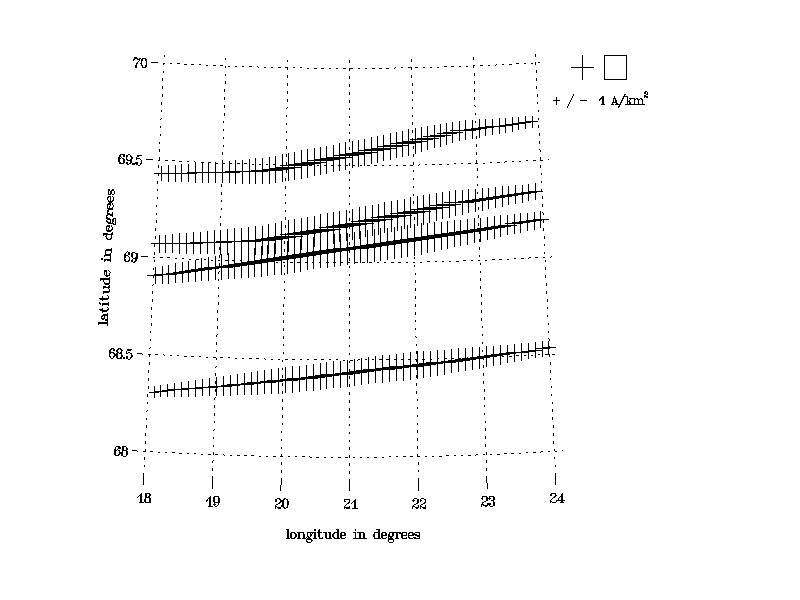
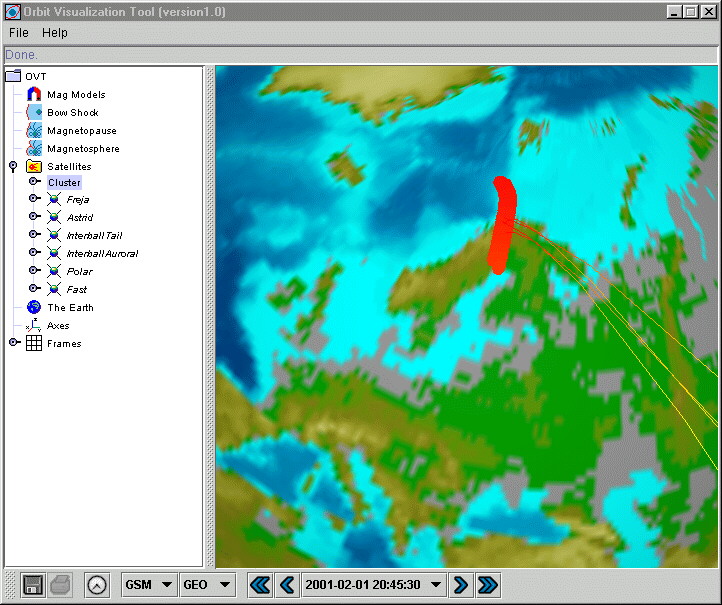
Ionospheric electric field, as
it
would be observed by the STARE radar:
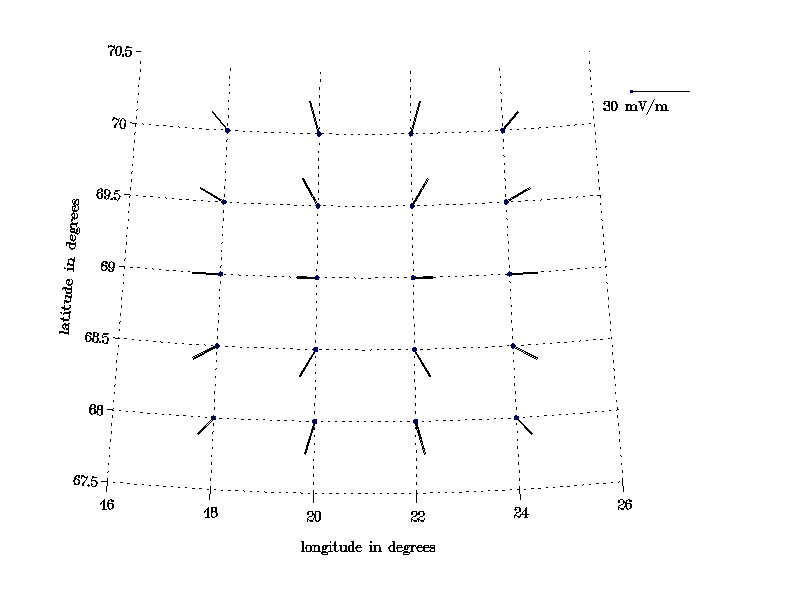
Output: 1.)
True (not equivalent) ionospheric currents obtained by the
"FAC-based"
method of characteristics:
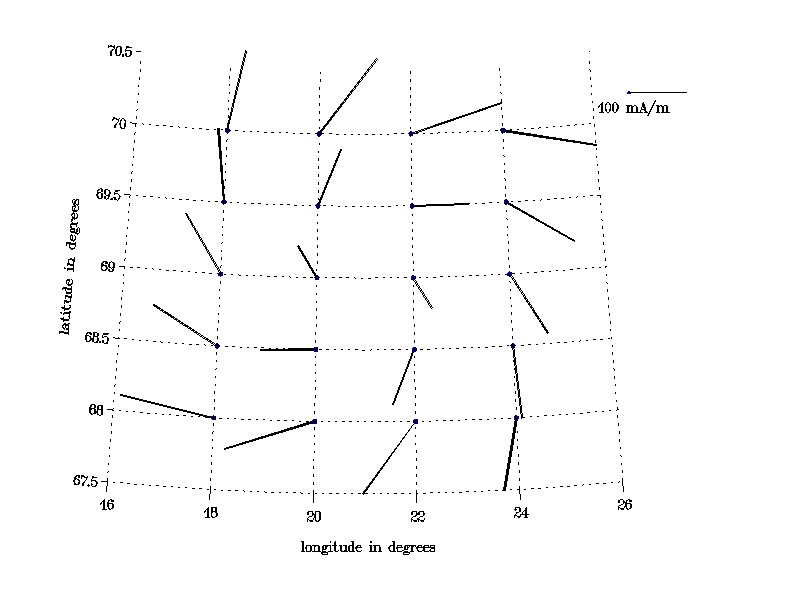
2.) Hall conductance
distribution
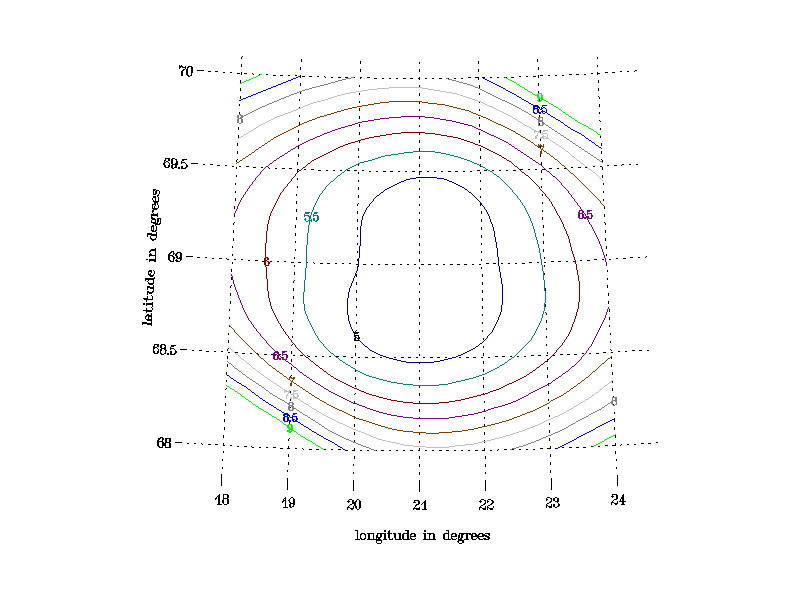
and 3.) Pedersen conductance
distribution:
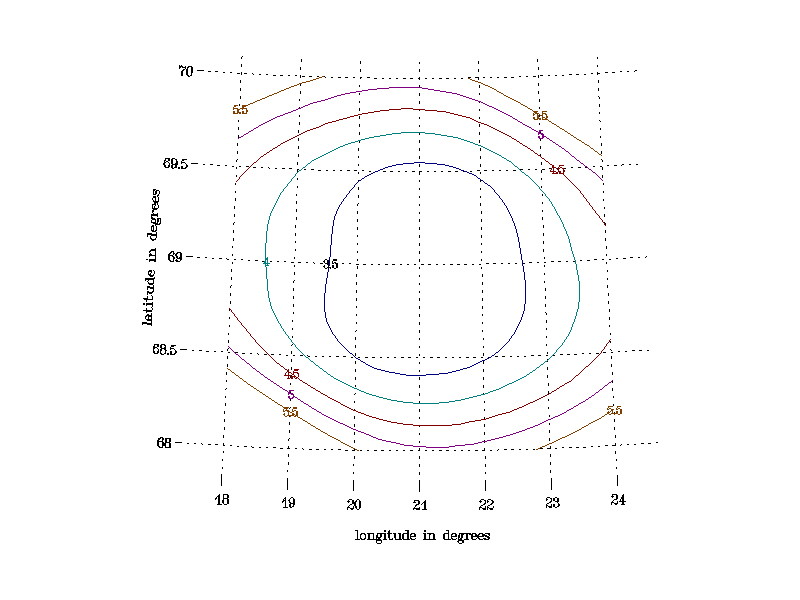
For further questions and
proposals
of events to be analysed, contact Olaf
Amm.
Maintained by: Olaf
Amm
Latest update: 18.03.2004







